
Below we’ll analyze the pros and cons of LinkedIn engagement pods, experiment on their effectiveness, and explore different types and automation services.
What is engagement on LinkedIn?
If you’ve ever read about LinkedIn promotion, you’ve likely encountered the term “engagement.” Engagement is a crucial metric that signals to LinkedIn’s algorithm that your post resonates with your audience.
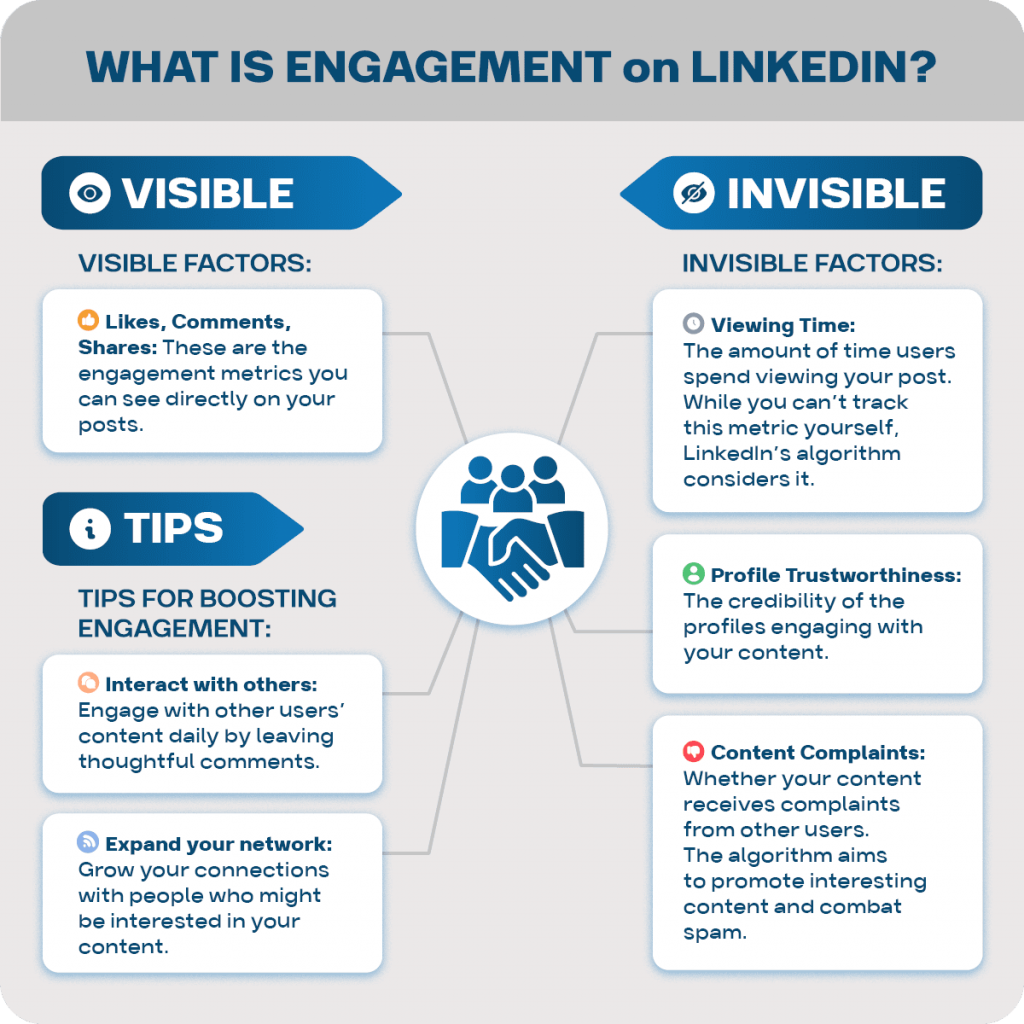
The platform’s algorithm measures this engagement to determine which posts to promote, taking into account several factors:
- Visible Factors:
Likes, Comments, Shares: These are the engagement metrics you can see directly on your posts.
- Invisible Factors:
- Viewing Time: The amount of time users spend viewing your post. While you can’t track this metric yourself, LinkedIn’s algorithm considers it when evaluating user behavior.
- Profile Trustworthiness: The credibility of the profiles engaging with your content also matters.
- Content Complaints: Whether your content receives any complaints from other users.
This means that the algorithm aims not only to promote interesting content but also to combat spam.
Therefore, a key task for every LinkedIn user is to boost engagement on their posts. After all, if it doesn’t generate interest, it may go unnoticed.
There are organic ways to increase post engagement, as well as more sophisticated methods, some of which will be discussed later in this article. You should focus on organic promotion methods, though they may require more effort and time to build your profile’s presence.
Typically, content from users with established expertise and a follower base above a certain size tends to gain organic traction more quickly!
How Does the LinkedIn Algorithm Work? Boost Visibility in 2024
To ensure your post is effectively promoted organically:
- One of the best things you can do is interact with other users’ content. Make it a daily routine to engage with their new posts and articles, leaving thoughtful comments. This increases the likelihood that you’ll receive similar positive interactions in return.
- Expand your network organically with people who might be interested in your content.
- Hashtags are a great tool for organic growth, as they help increase your reach. The larger the reach—meaning the more users who see your post—the greater the chances you’ll receive likes or comments. Therefore, actively use relevant hashtags and check out our article on how to use them effectively.
In the next section, we’ll explore other strategies for boosting engagement.
What is a LinkedIn pod?
Engagement pods are groups where members agree to like and comment on each other’s posts to boost visibility. These pods can exist as secret groups on platforms like WhatsApp or Telegram, or through third-party services designed specifically for engagement.
How to Increase LinkedIn Engagement via Pods – How Pods Work
1. Post Creation:
You create a LinkedIn post as usual.
2. Share the Link:
In manual groups, you copy the link to your post and share it within the group. In third-party services, you submit the link to the platform.
3. Engagement:
Group members or service participants will like and comment on your post. Some services allow you to pre-define the comments you’d like to see.
Pros and Cons of Using Engagement Pods
Pros:
– Boost Initial Visibility:
Engagement from real accounts, especially those with strong profiles, can make your post appear more popular, which might attract more organic interactions from others.
– Psychological Appeal:
A post with numerous likes and comments is more likely to be perceived as valuable, encouraging others to engage as well.
Cons:
– Algorithm Detection:
LinkedIn’s algorithm might detect that all interactions are coming from a shared link within a pod. This could reduce the likelihood of your post being promoted organically.
– Non-Targeted Engagement:
While the accounts engaging with your post may be real, they are often not your target audience or potential clients. The engagement is driven by the pod agreement, not genuine interest.
– Reciprocal Obligation:
If you use a third-party service, your account will also be used to like and comment on other people’s posts, which may not align with your brand or content strategy.
Buying LinkedIn likes – yes or no in 2024?
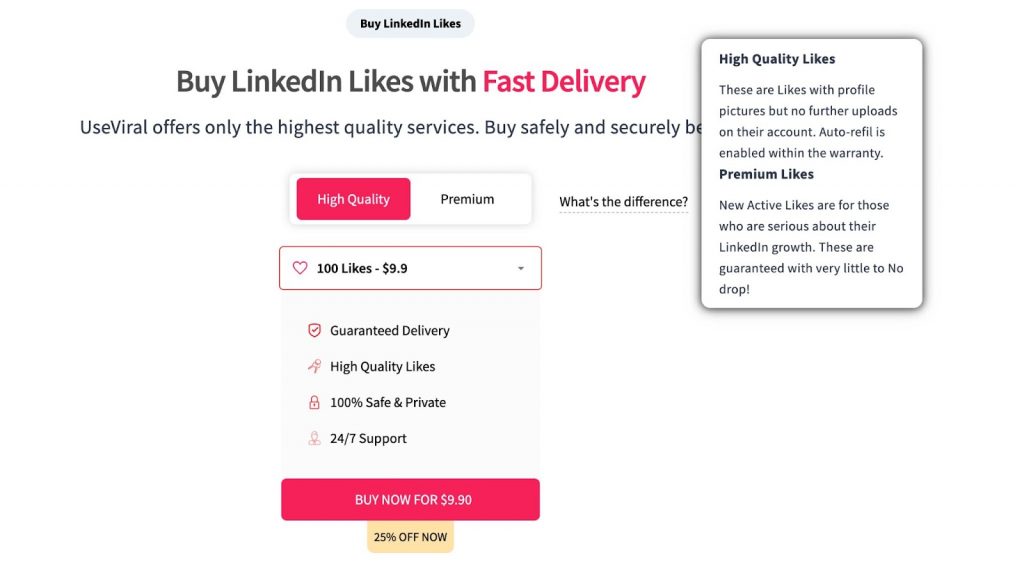
The Temptation of Buying Likes
In 2024, you can purchase 100 LinkedIn likes for as little as $10, a price comparable to a one-month subscription to a pod service like Lempod. Platforms such as Instafollowers, UseViral, SidesMedia, and Growthoid offer these services. However, despite the low cost and instant gratification, this approach has significant drawbacks.
Low-Quality Engagement
Even services that claim to offer “high-quality” likes, where profiles have a profile picture, often deliver engagement from accounts that are either inactive or bot-driven. These interactions may inflate your like count, but they lack authenticity and do not contribute to meaningful engagement or lead generation.
Algorithm Detection and Shadow banning
LinkedIn’s algorithm is sophisticated and can often detect when engagement comes from non-organic sources, such as bots or low-quality accounts. When this happens, your profile risks being shadow banned, meaning your posts will have severely limited visibility in other users’ feeds. This could be detrimental to your organic reach and overall presence on LinkedIn.
Long-Term Consequences
While buying likes may give the illusion of popularity, it does not foster genuine connections or build your professional network. The likes you receive are unlikely to translate into real engagement, conversations, or business opportunities. Over time, this approach can harm your credibility and damage your reputation.
Instead of purchasing likes, consider investing your time and resources into more sustainable strategies.
Examples of engagement groups
What engagement group should you choose in 2024? Let’s figure it out!
Manual Pods
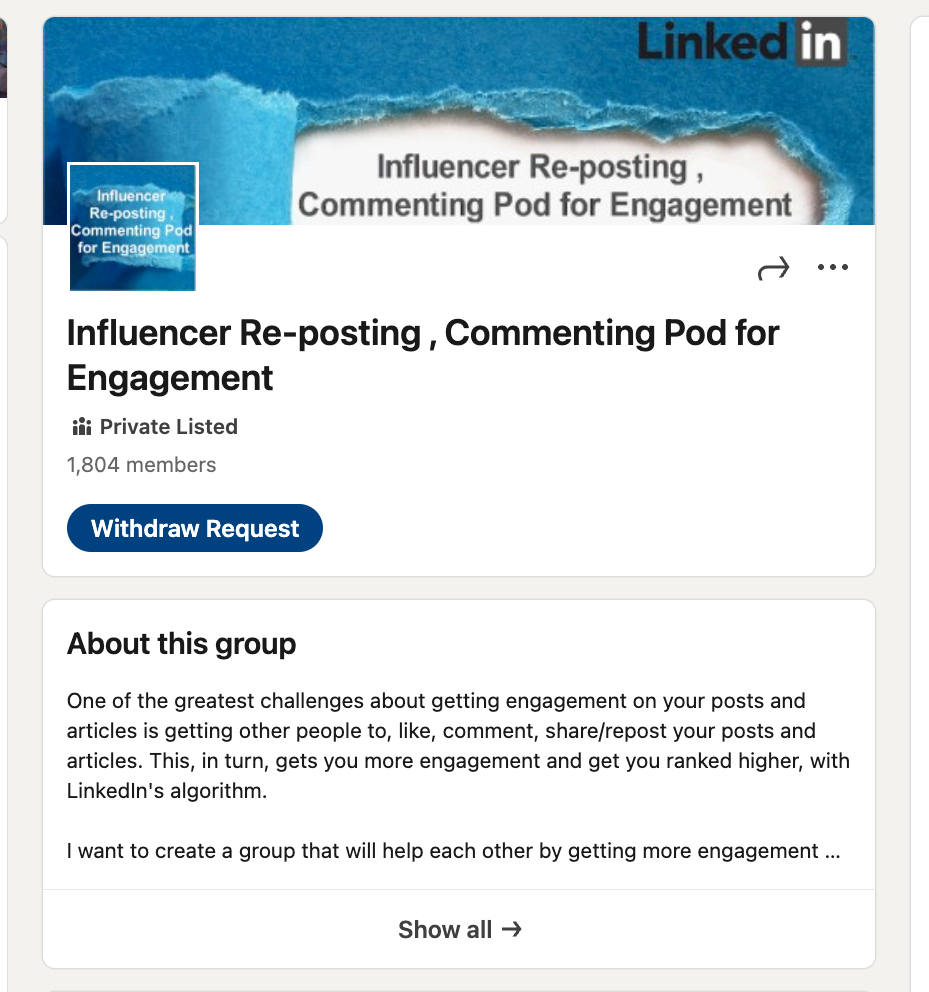
These are informal groups where members share their post links and agree to engage with each other’s content. By joining these groups and posting a link to your new content, you can potentially receive reactions or comments from other members. These groups can be hosted on various platforms, including LinkedIn, Telegram, WhatsApp, or Facebook.
However, this method has some significant drawbacks:
- No Guarantee of Engagement: There’s no assurance that other group members will engage with your content as expected. While you might receive some likes or comments, it’s not guaranteed, and the level of engagement can vary greatly.
- Tracking Issues: It can be challenging to track how many people from these groups actually interacted with your post. Since these interactions are coming from external sources, it’s difficult to measure the effectiveness of this approach.
- Algorithmic Recognition: When engagement comes from links shared in external chats or apps, LinkedIn’s algorithm may recognize this as artificial manipulation. The algorithm might then treat these interactions as less valuable, which could limit the organic reach of your post.
- Low Effectiveness: Since this is a free method, the effectiveness is often low. You cannot guarantee the reach or the quality of the engagement you will receive, making it an unreliable way to boost your content.
Automatic Pods

These platforms, such as Lempod, Alcapod (which ceased operations on June 29, 2020), or Podawaa, automate the engagement process, making it more reliable for ensuring that your posts receive interaction. Typically, these platforms require a subscription, but they offer a level of assurance that manual engagement methods do not.
Pros:
- Targeted Engagement: Many of these services allow you to join pods (groups of users) that align with your target audience, such as sales professionals, founders, or industry-specific experts. This ensures that the likes and comments you receive come from real profiles that match your professional niche.
- Analytics and Tracking: Unlike manual group sharing, these platforms often provide built-in analytics. You can track how many likes and comments your post receives, and distinguish between organic interactions and those generated through the service.
- Guaranteed Engagement: When you use these platforms, you are almost guaranteed to receive the likes and comments promised. Even during a trial period, you can typically see a noticeable increase in engagement.
Cons:
- Risk of Algorithm Detection: LinkedIn’s algorithm is sophisticated and can detect when you are using browser extensions like those required by many of these engagement platforms. LinkedIn can see which extensions are installed on your browser, and it maintains a list of banned extensions. If you are caught using one of these, your account could be flagged, leading to warnings or even a ban.
- Potential Account Security Risks: Using these services often means granting them access to your LinkedIn account.
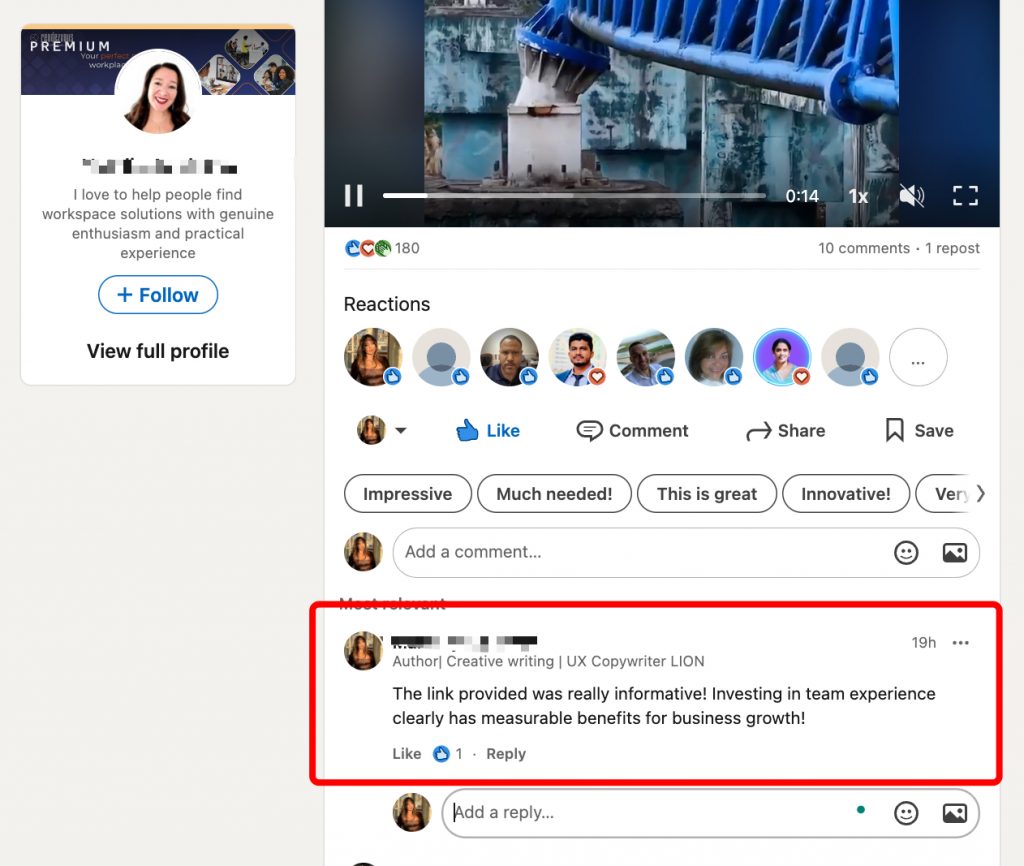
This can result in your account being used to like and comment on other users’ posts within the pod, sometimes without your full awareness. This lack of control can be concerning, especially if your account starts engaging with content that doesn’t align with your professional brand.
- Artificial Interaction: Even though the profiles engaging with your content are real, the interactions are often not organic. These users are participating because they are part of the same pod, not necessarily because they are genuinely interested in your content. This can limit the long-term value of the engagement, as it may not lead to meaningful connections or leads.
- Algorithmic Concerns: The LinkedIn algorithm may recognize that the likes and comments are coming from users who clicked through a link provided by an engagement platform. This could result in the algorithm downgrading the quality of these interactions, potentially limiting the organic reach of your post.
Extensions are not safe – Bad LinkedIn Extensions List: How to Avoid an Automation Warning
LinkedIn policy
Is LinkedIn actively fighting against the use of engagement pods, and can it detect when you’re using such methods for promotion? Yes, the platform’s algorithms are designed to combat these tactics, and here are some ways they can identify them:
- Non-organic engagement: If all the likes and comments on your post are from users who are not in your network, this can be a red flag for LinkedIn’s algorithm. The platform looks for organic interactions, and when most engagement comes from outside your immediate circle, it raises suspicion.
- Company page interactions: If you’re promoting a post from a company page and the algorithm notices that all the likes and comments are from users who are not followers of that page, this behavior is also considered suspicious. It suggests that you may be using external methods to boost your content’s reach.
- Shadow banning: When LinkedIn’s algorithm detects the use of engagement pods or other artificial engagement tactics, your account may be placed in a shadow ban. This means your posts will be shown to fewer people, including those within your network, drastically reducing your content’s organic reach.
Is It Worth It?
Using engagement pods can be a quick way to gain traction on LinkedIn, especially if you’re looking to make your posts appear popular. However, the long-term value is questionable since the engagement is not coming from your target audience. It’s more of a short-term strategy to boost visibility rather than a sustainable way to build meaningful connections or generate leads.
For those looking to increase their LinkedIn engagement organically, it’s advisable to focus on quality content, strategic networking, and genuine interactions, reserving pods as a supplementary tactic if needed.
LinkedIn pod experiment 2024
However, despite these risks, we decided to conduct an experiment to see how different types of engagement pods work, and below you’ll find the results. By considering the risks, you can choose the most effective approach for your needs.
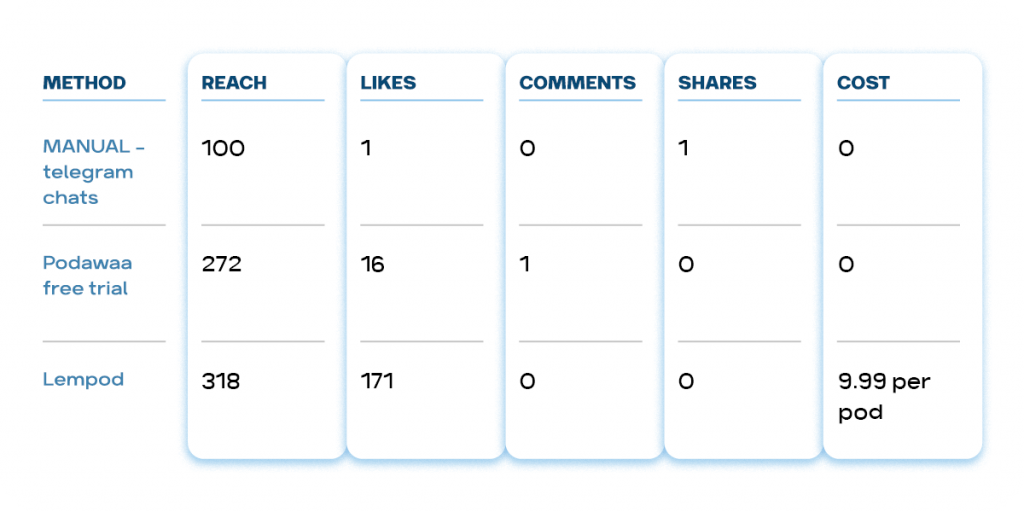
User reviews
Despite this, extension tools like Podawaa and LemPod are worth checking out for comments. However, user reviews in the Chrome store are not the best. For many users, these tools turned out to be non-functional. But you can find out the results of our experiment below. Podawaa’s rating in Chrome is 3.2, while LemPod’s is higher at 4.2. LemPod does have negative reviews, but they all receive responses from the team in Chrome.
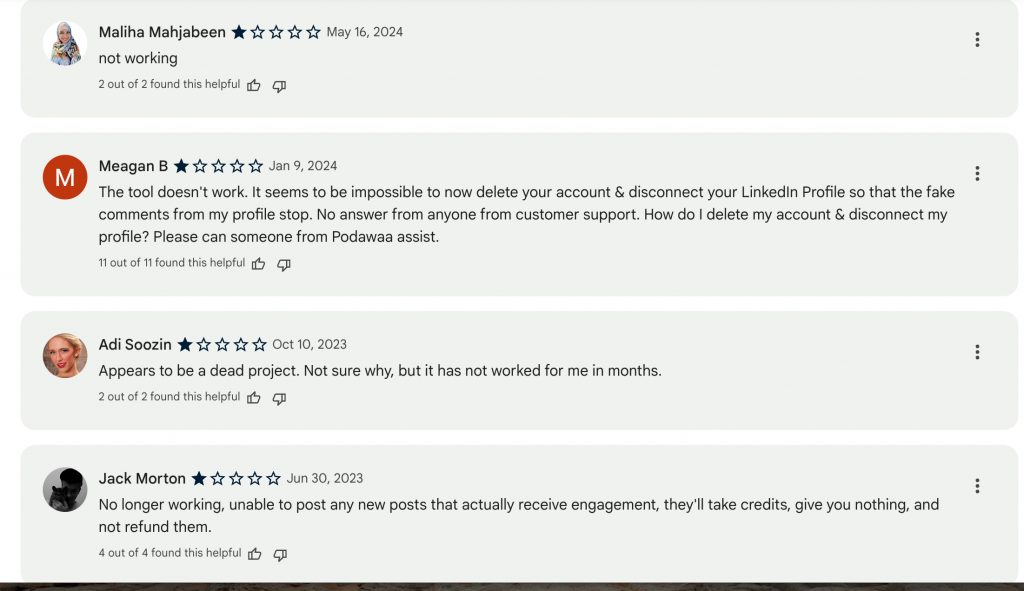
Podawaa
This service offers a free subscription that allows you to participate in an unlimited number of pods. The service operates on a credit system where you receive 100 credits, with each credit equating to one engagement (like, comment, etc.).
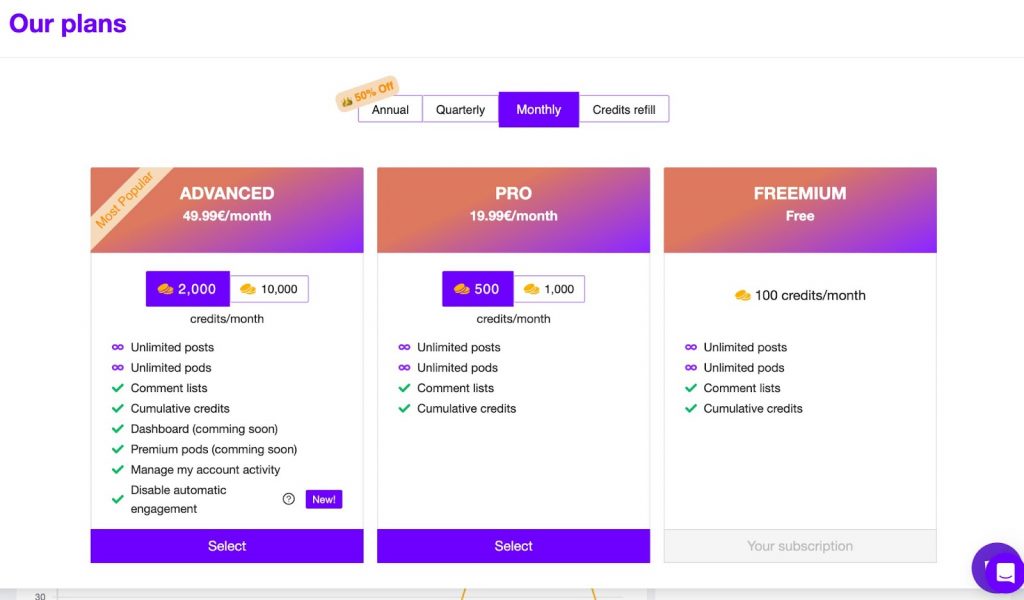
To gain engagement on your posts, you need to have enough credits. Credits are renewable, meaning that your account will also engage with other posts—leaving likes, comments, and other interactions—to accumulate more credits in your account.
Activity Tracking: In the “Your Activity” section, you can track where your likes were placed and how many credits you earned for each action.
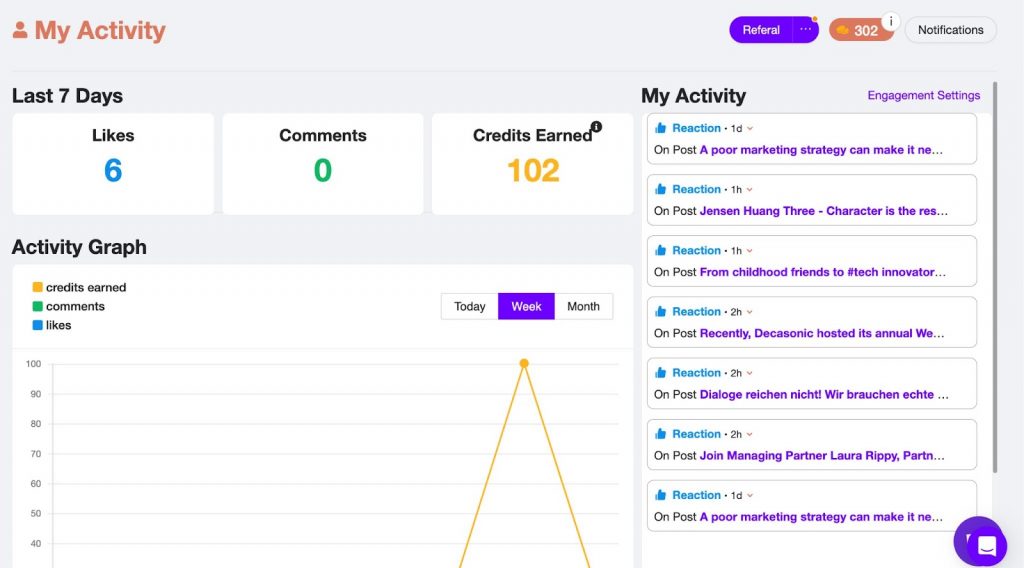
Joining Industry-Specific Pods: This service allows you to join groups (pods) by industry, and you can participate in an unlimited number of them, unlike other services like Lempod. Based on your selection and participation, the service will engage with posts from members of these groups. You can also create your own pod.
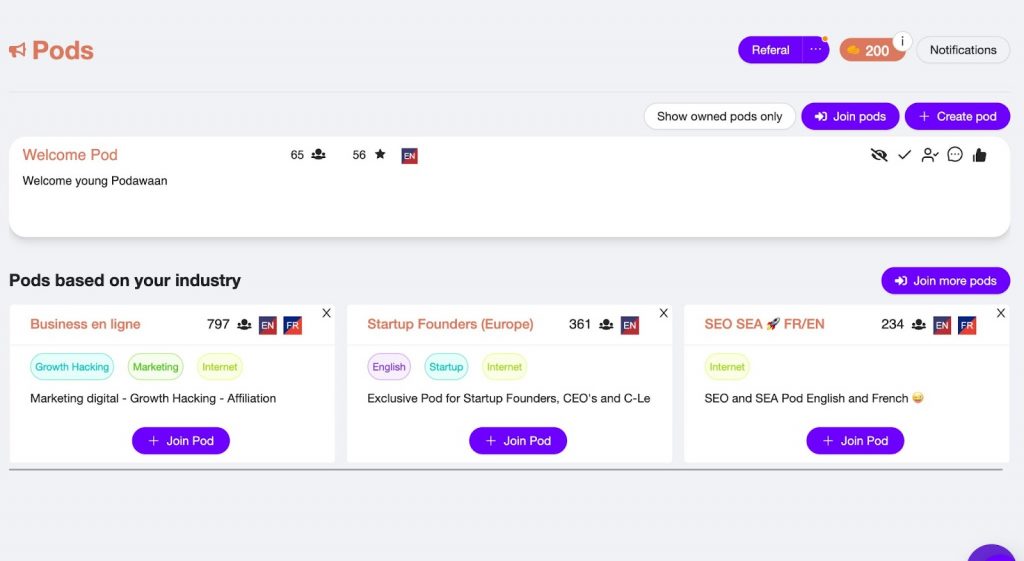
Promoting a Post: To promote a post, you need to publish it on LinkedIn and insert the link into the service in the designated post section. The service then allows you to specify the number of likes and other reactions you want to receive on your post.
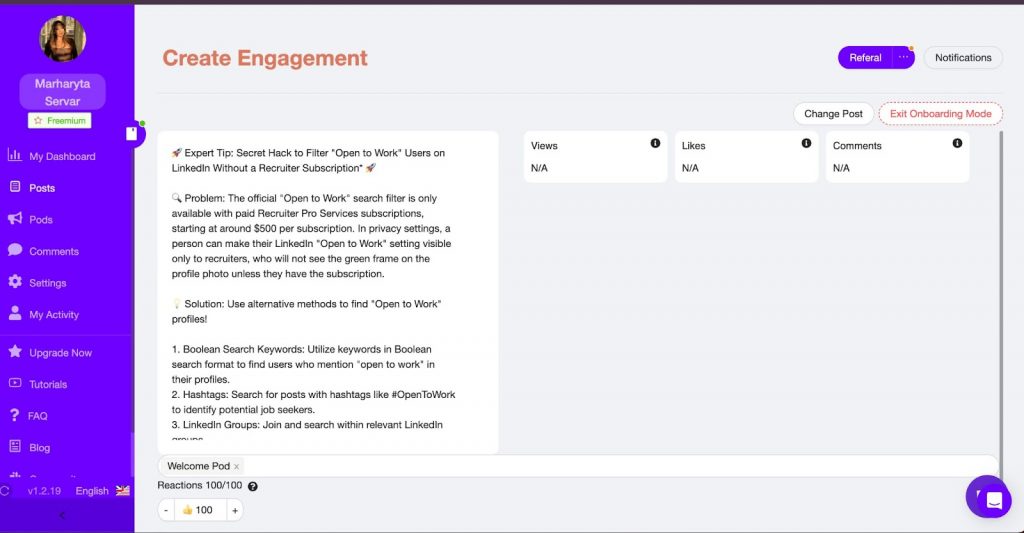
Results: After some time, we observed that likes started appearing. However, even on a paid subscription, the results were underwhelming—we received only 16 likes out of the promised 100. After this, the service stopped promoting the post, and we were unable to boost it again.
Additional Features:
- You can specify the text of the comments you want under your post.
- You can choose pods without limits.
- You can download the list of pod participants to verify the trustworthiness of their profiles.
- You can set a timeout between actions.
- You can create comment threads, add text for replies to comments, and even add likes to comments. All of this will be executed by the profiles participating in the pod.
- The users engaging with your content are genuinely high-quality profiles.
Interface and Analytics: The interface of the pod service is user-friendly. It also offers post analytics and tracks your actions within the pod.
Cons: We received fewer likes than expected, but we did get comments. Despite the service’s promises, the actual engagement was minimal.
Lempod
Unlike Podawaa, this service requires a subscription fee. After downloading the extension, if you want to promote your post, the subscription costs $9.99. This fee allows you to promote an unlimited number of posts, but only within a single pod. This limitation can complicate your strategy since the audience will be quite similar and less diverse.
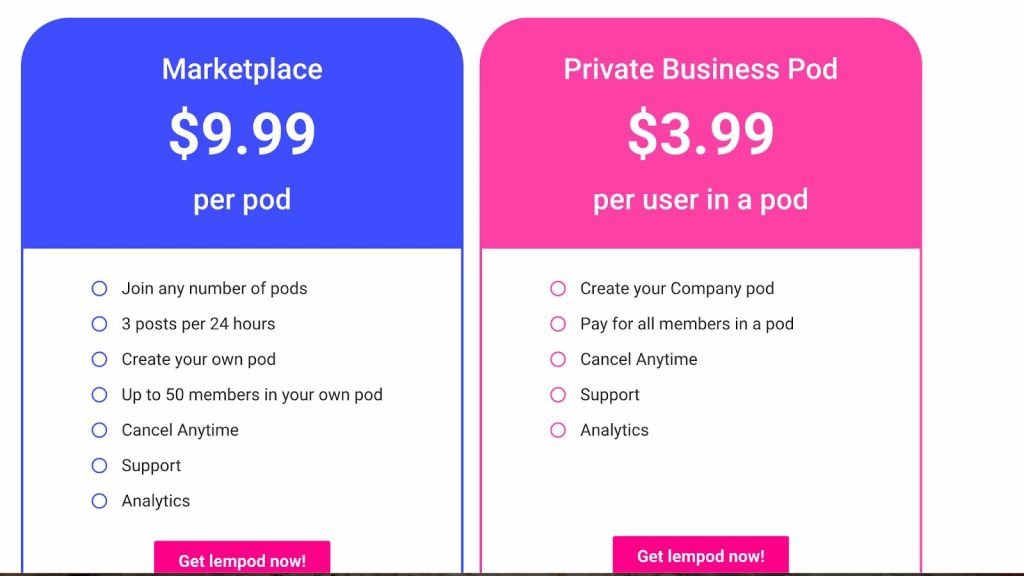
Creating a Post Promotion Request:
1. Insert Link: To begin promoting your post, insert the link to the post you want to boost.
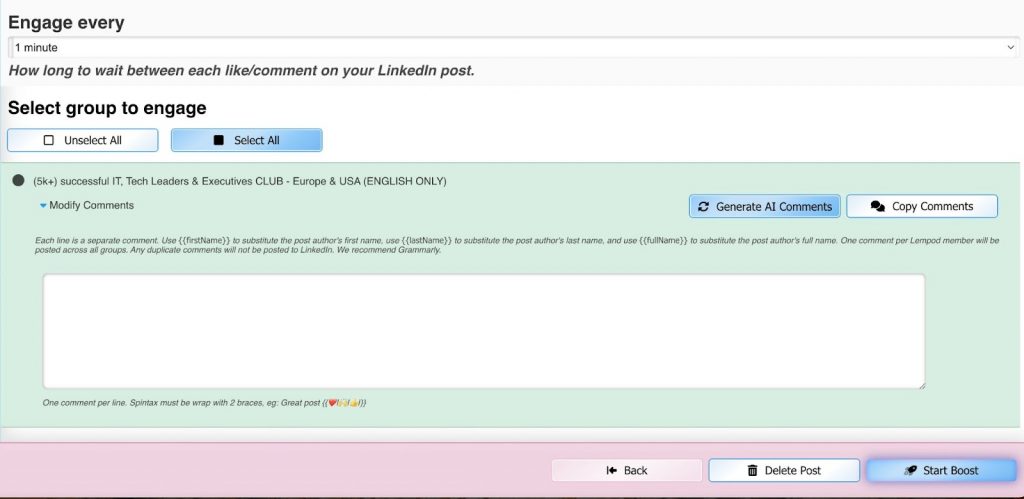
2. Choose Pod for Engagement: If you are a member of multiple pods, you can select from which pod you want to receive engagement.
3. Set Reaction Frequency: You can set the frequency at which reactions are made on your post.
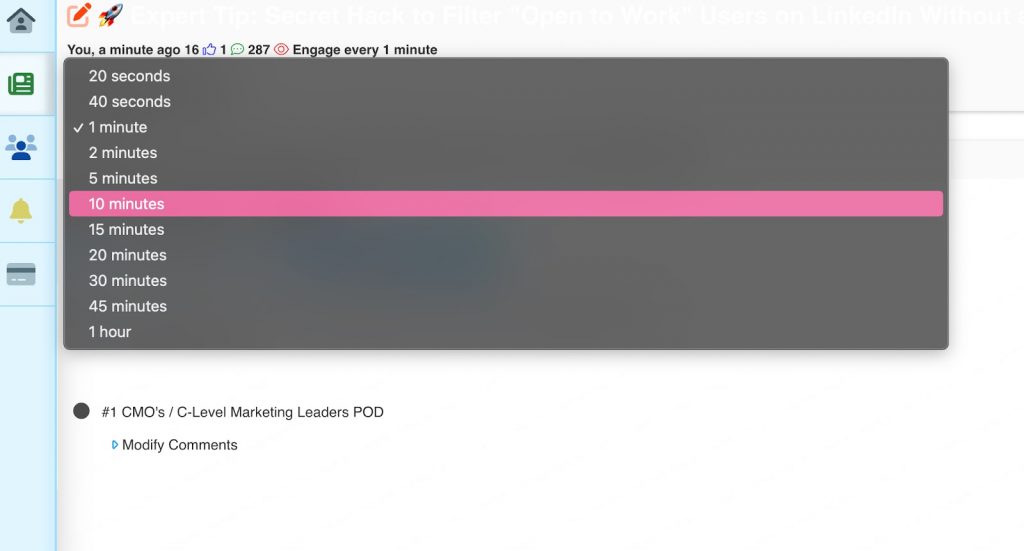
4. Manage Comments with Custom Variables: The service allows you to manage comments using custom variables. There’s also a feature to automatically generate AI comments based on the text of your post immediately after posting.
5. After Launch: Once you’ve selected the group and set the comment text, the service will display the potential users who will leave comments.
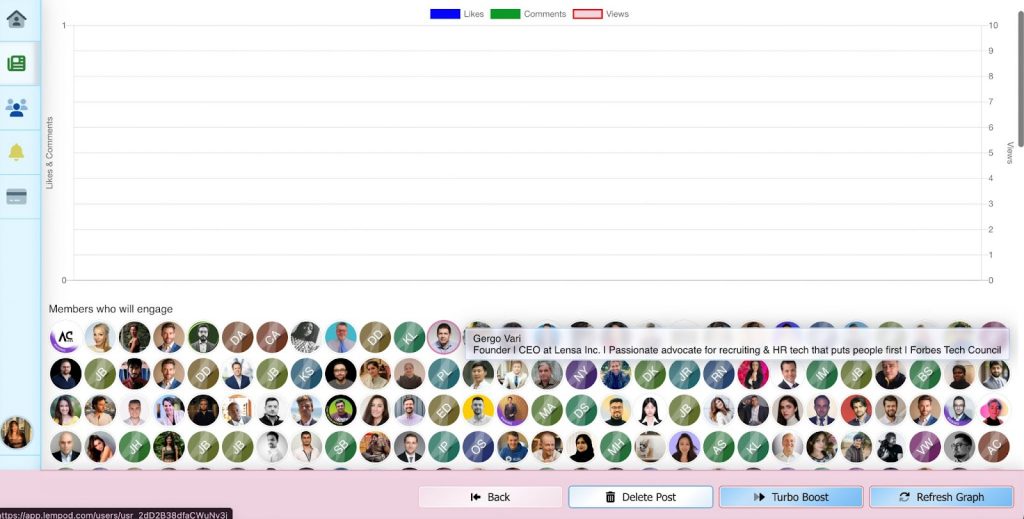
Cons:
- Interface: The interface is not very user-friendly, featuring a primitive design with limited activity data.
- No Real-Time Activity Tracking: There is no option to view real-time activity.
- Limited Activity Visibility: The service does not display the activities your profile engages in.
- Limited Statistics: Statistics are available only for received reactions, with no data on the sent ones.
- Pod Limitation: There’s a restriction on the number of pods per subscription.
Pros:
- Guaranteed Engagement: You are guaranteed to receive the declared number of reactions on your post.
- AI Comment Generation: There’s an AI feature for generating comments.

Manual pods
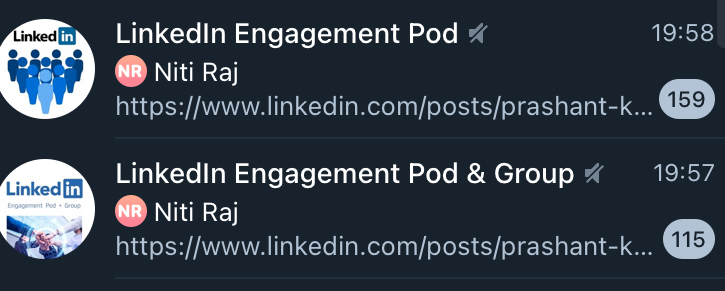
We also attempted to promote a third post completely free through manual channels. This process often requires insider knowledge of specific industry channels. For example, on Telegram, there are chats specifically for post promotion. We shared the link to our post in two such Telegram groups.
Results:
- Engagement: The post received 0 comments and 0 likes.
- Views: The post did get 100 views, but there is no way to confirm whether these views were a result of posting the link in the Telegram chats, as this cannot be tracked.
- Repost: The post received one repost from a user, but again, there’s no way to confirm that it was due to the Telegram chats.
Challenges:
- Uncertain Impact: The main downside of this method is the lack of measurable results. There’s no guarantee that the views, likes, or reposts came from the promotion efforts in the chats.
- LinkedIn Engagement Groups: We also tried to find engagement groups within LinkedIn itself. We found several groups and sent requests to join, but as of now, none of our requests have been approved. This delay or outright rejection makes it difficult to rely on these free and manual methods for consistent engagement.
The results are inconsistent, and the inability to track or guarantee engagement makes these methods less reliable.
Pod vs. automation – “Boost post” action in Linked Helper
While pods can quickly boost engagement metrics such as likes and comments, they often attract a narrow, uninterested audience that is unlikely to convert into actual customers. Moreover, LinkedIn’s algorithm can detect when engagement is coming from users who are not in your network, which may lead to reduced organic reach or even shadow banning your account.
Alternative: Automation with Linked Helper
Instead of relying on pods, automation offers a more strategic approach to boosting your posts. Linked Helper provides several tools that can help increase engagement while targeting the right audience.
Basic Functions
- Mass Liking and Commenting: Linked Helper allows you to automate likes and comments on posts within your network. While the tool enables you to create custom comments with variables, these comments will be the same for all users, which could come across as inauthentic. However, mass liking is effective because you control the selection of users whose posts you engage with, ensuring they are within your target audience.
- Network Expansion: You can use Linked Helper to grow your network by connecting with users who are likely to be interested in your content. This targeted approach increases the chances of meaningful interactions and potential business opportunities.
Unique Feature: Post Boosting Action
Linked Helper also offers a unique “Boost post” action that can significantly enhance your content’s visibility:
- Boost Action: This feature allows you to insert a link to your post, and Linked Helper will automatically tag selected users in the comments. By choosing specific individuals, you can ensure that your post reaches a relevant audience, increasing the likelihood of genuine engagement.
- Organic Growth: The boost action helps you gather organic likes and comments from users who are more likely to be interested in your content. This method contrasts with pods, where engagement often comes from users outside your network, leading to less meaningful interactions.
While pods can offer a quick surge in engagement, automation through Linked Helper provides a more sustainable and targeted approach. By focusing on connecting with the right people and boosting your posts organically, you can build a stronger network and achieve long-term growth. Although the results may not be as immediate as with pods, this strategy is more likely to lead to meaningful connections and increased sales over time.
Finally… What is the best way to grow engagement?
In conclusion, after comparing the mechanics of existing methods for gathering engagement through pods, you should ask yourself: what is your ultimate goal?
If your goal is to use your LinkedIn account for sales or lead generation, then the engagement you receive through pods won’t achieve this objective in the long term. You get likes from real and cool accounts, but people don’t really see your content!
Instead, it’s better to focus on targeted interactions with accounts that are potentially interested in your content. This approach might not result in rapid post growth, but it is more sustainable in the long run.
On the other hand, if your goal is to create an impression of trust or gather likes on your posts to make your content appear more credible, engagement pods might be effective. According to our experiment, Lempod performed the best, delivering the promised number of likes and comments.